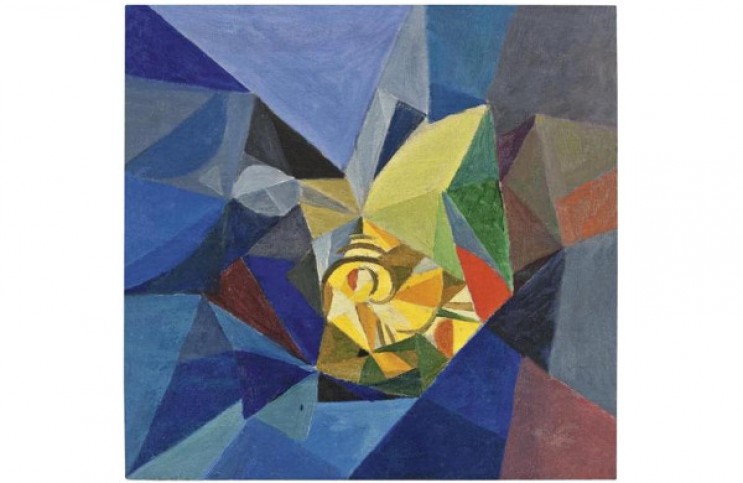
Larionov's approach to abstract painting was the idea that certain scientific principles, like radioactivity, ultraviolet light, and x-rays, were the foundation for the vision of what he wanted to create. It was then that Rayonism began, with a distinct vision of what abstract art was representative of. However, in 1912, Goncharova and Larionov left, in protest at the group's reliance on French art, and organised their own rival exhibitions. In 1910, the latter two people, together with many associates such as Aristarkh Lentulov and Ilya Mashkov, they founded the exhibiting society the Jack of Diamonds. Larionov and Goncharova were early followers of Russian Futurism. Shortly after the movement started, Russian Futurism, Ego-Futurism and Cubo-Futurism began in Russia, the movement was developed by painter David Burliuk, poets Aleksei Kruchyonykh, Vasily Kamensky and Vladimir Mayakovsky, and many others. The Futurists took speed, technology and modernity as their inspiration, depicting the dynamic character of early 20th century life examples of Italian Futurists are Umberto Boccioni and Giacomo Balla. Marinetti published the Founding Manifesto of Futurism. Founded and named by Russian Cubo-Futurists Mikhail Larionov and Natalia Goncharova, it was one of Russia's first abstract art movements. Rayonism (or Rayism or Rayonnism ) was a style of abstract art that developed in Russia in 1910–1914. ( May 2013) ( Learn how and when to remove this template message)

Please help to improve this article by introducing more precise citations. This article includes a list of general references, but it lacks sufficient corresponding inline citations.


 0 kommentar(er)
0 kommentar(er)
